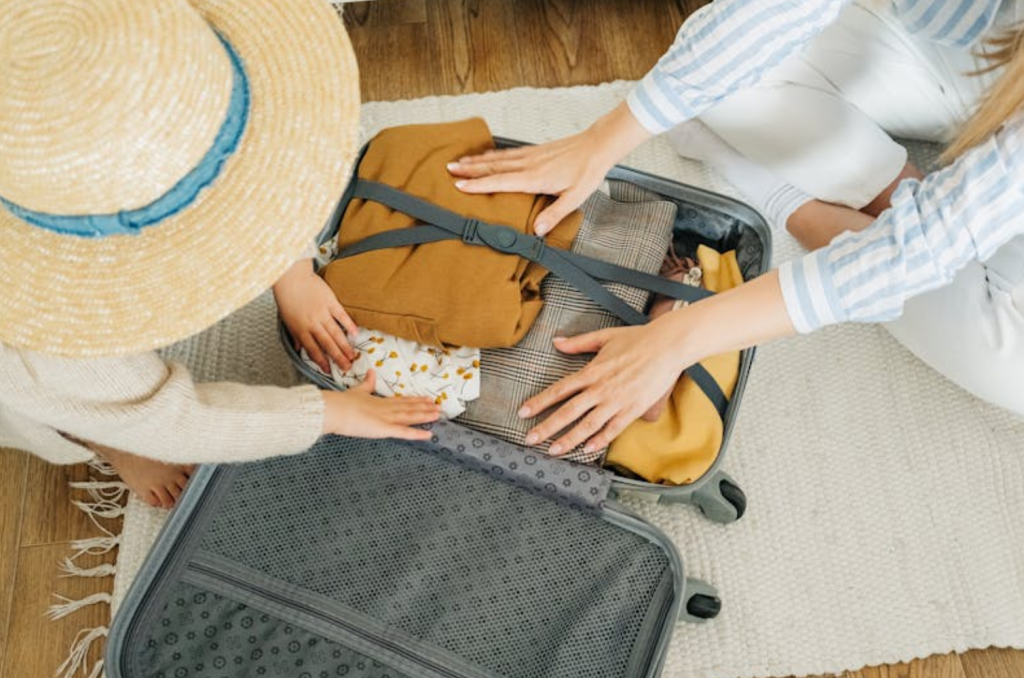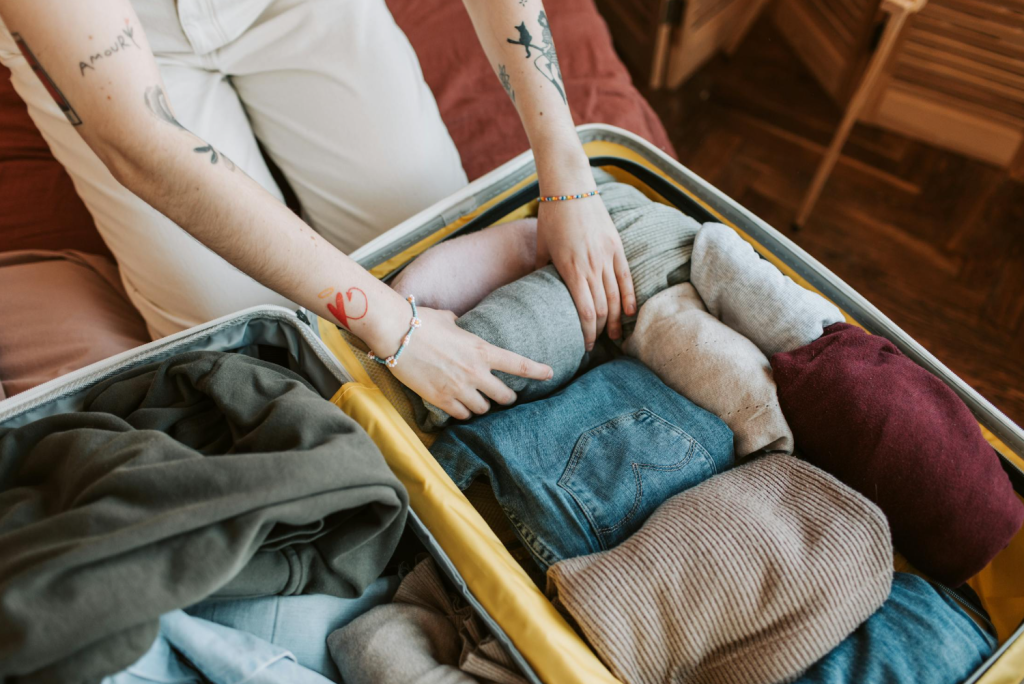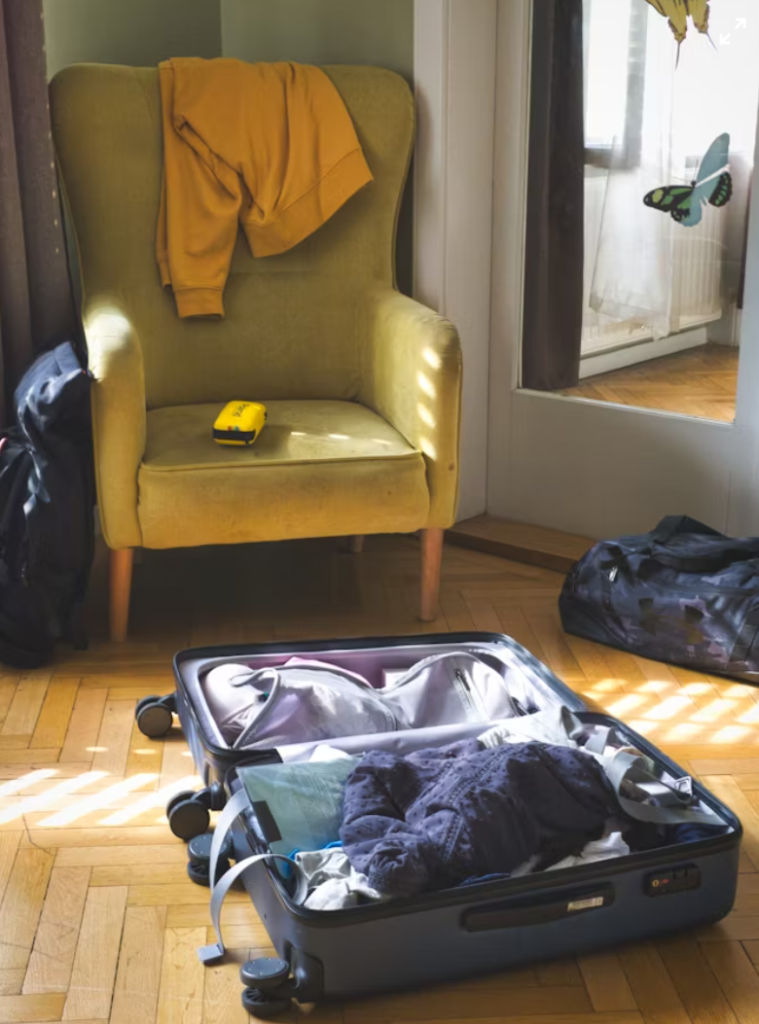Smart Packing Tips: How to Build a Capsule Wardrobe for Travel
Why a Capsule Wardrobe Works for Travel
A capsule wardrobe is not about owning fewer clothes for the sake of minimalism—it’s about owning the right clothes. For travel, that means every piece earns its spot by being versatile, comfortable, and easy to care for. Instead of dragging a suitcase full of “just in case” items, you bring a carefully curated set of garments that can create multiple outfits. Imagine your luggage acting like a small, powerful closet rather than an overstuffed trunk—efficient, calming, and flexible.

Key Benefits of a Travel Capsule Wardrobe
Space and Weight Savings
Less clutter means lighter luggage. That saves on airline fees, simplifies transfers, and frees up energy for the trip itself. You’ll be amazed how a few strategic swaps—lighter fabrics, fewer shoes—reduce weight without reducing options.
Fewer Decision Fatigues, More Freedom
When everything coordinates, mornings are faster and your stress level drops. You’ll spend less time agonizing over what to wear and more time enjoying the destination. That mental clarity is a travel luxury.
Start with Trip Variables — Plan First
A great capsule starts with smart planning. Ask: where am I going, what will the weather do, and what will I actually do there?
Destination Climate and Weather Window
Check average temperatures, expected precipitation, and daylight hours. If you’re traveling in shoulder seasons or to places with unpredictable weather (coastal towns, mountain valleys), prepare for layers.
Microclimates and Seasonal Surprises
Cities can have microclimates—sun at noon, chilly by the water at sunset. Also watch for local holidays that might affect opening hours or dress codes. Planning for variability avoids both overpacking and embarrassment.
Activities, Dress Codes and Time of Day
Your wardrobe for hiking differs from one for cocktail dinners. Separate ‘activity buckets’—sightseeing, active days, evenings out—and account for any formal events. This clear separation keeps your capsule purposeful.
Choose a Coordinated Color Palette
A smart palette makes mix-and-match effortless. Limit your base to two to three neutrals (black, navy, beige, gray) and add one or two accent colors to keep personality without chaos.

Neutrals as Foundation
Neutrals help every piece play well together. A navy pair of trousers should work with multiple tops; a beige jacket complements most palettes.
Accent Colors and Prints
Bring 1–2 accent pieces (a patterned scarf, a colored blouse) to create visual interest. These items should be interchangeable with most base pieces.
Prioritize Fabrics and Function
Material choice determines how garments behave in a suitcase and on your body.
Wrinkle Resistance and Quick Drying
Opt for fabrics like merino wool blends, technical synthetics, and high-quality knits that resist wrinkles and dry quickly after a sink wash. Avoid pure cotton for travel staples if you’ll need them to rebound quickly.
Layerability and Breathability
Thin, insulating layers win over bulky single pieces. Breathable fabrics keep you comfortable across climates—think merino, modal, lightweight fleece, and breathable synthetics.
Core Pieces — The Building Blocks
A capsule’s strength comes from predictable building blocks that can be rotated daily.
Tops: What to Pack and Why
Pack 3–5 tops: a basic tee, one nicer blouse or button-up, a casual shirt, and one lightweight sweater or merino long-sleeve. Choose tops that tuck, untuck, tuck into skirts, or layer under jackets.
Bottoms: Versatility First
Two to three bottoms—one pair of well-fitting jeans, versatile trousers (chinos or travel pants), and maybe a skirt or shorts depending on destination—are usually enough. Darker colors hide stains and pair easily.
Outer Layers: Jackets, Cardigans, and Rain Gear
One lightweight packable jacket (water-resistant), one mid-layer (cardigan or fleece), and one scarf that doubles as a blanket on flights is a robust combo. If traveling to a cold climate, swap for a warm, compressible coat.
Shoes: Pack Smart, Not Many
Shoes are heavy and take up space. Bring at most three pairs: comfortable walking shoes, a smart casual shoe (loafers, ankle boots), and light sandals or slip-ons if climate-appropriate. Wear the bulkiest pair on travel days.
Accessories: Small Items, Big Impact
Belts, scarves, jewelry, and hats transform outfits. A scarf can both dress up a look and act as extra warmth—high impact for low weight.
Smart Packing Techniques
Rolling, Folding, and the Bundle Method
Each method has pros and cons. Rolling saves space and reduces wrinkles for casual fabrics. The bundle method (wrapping garments around a core) minimizes creases in dressier clothes. Mix methods according to fabric type.
Use Packing Cubes and Compression Bags Strategically
Packing cubes organize outfits and make retrieving items easy. Compression bags are great when you need to squeeze bulky items (coats, sweaters), but beware—they can crush delicate fabrics and remove breathing room.
Layering in the Bag — Outfit-by-Outfit Packing
Pack outfits together in cubes: top + bottom + underwear + socks. This simplifies mornings and ensures you’re actually creating coordinated looks, not random piles.

Outfit Planning — Combinations and Mix-and-Match
Create 7–10 Wearable Outfits from 10–12 Items
Rule of thumb: 10–12 clothing items (excluding underwear and outerwear) can generate many combinations. For example: 4 tops × 3 bottoms + 2 dresses + layers = several dozen outfit permutations. Document staple combos you like so you won’t overthink while traveling.
Visual Checklist: Take Photos Before You Pack
Lay out outfits and snap photos. This visual packing list gives confidence and speeds dressing on the road.
Laundry Strategy on the Road
Fast-dry Essentials and Sink Washing
Pack a small travel detergent and know how to sink-wash key items (merino, underwear, tees). Hang them overnight—most essential pieces will be ready by morning.
When to Use Local Laundry Services
If you’re staying longer than a week or have fabrics that need professional care, budget for local laundromats or hotel services. This allows fewer pieces and lighter luggage.
Toiletries, Beauty, and Tech — Minimalist Rules
Multi-use Products Save Space
Choose products that serve multiple roles—tinted moisturizer with SPF, dual-purpose balm, and shampoo-conditioner combos. Decant into small bottles and use solid alternatives (solid shampoo bars, solid deodorant) to cut liquid limits.
Carry-on Limits and TSA Considerations
If flying carry-on only, follow the 100ml rule and use clear bags. Put tech chargers and adapters in an easily accessible pouch to avoid digging.
Sample 7-Day Capsule Wardrobe (City + Day Trips)
Daytime Looks
- Day 1: Lightweight tee + dark jeans + walking shoes + light jacket
- Day 2: Button-up blouse + trousers + loafers
- Day 3: Casual dress + sandals + scarf
- Day 4: Layered long sleeve + skirt + boots
Evening Looks
- Night 1: Blouse + tailored trousers + statement necklace
- Night 2: Dress with ankle boots + light jacket
This sample shows how 10–12 items plus two shoes and a jacket can cover a full week.
Common Mistakes and How to Avoid Them
- Packing “just in case” items: Replace with versatile multi-use pieces.
- Overpacking shoes: Limit to 2–3 pairs max.
- Ignoring laundry options: Plan to wash mid-trip.
- Forgetting a weather-proof layer: Rain ruins more than a plan—it ruins clothes.
- Not testing outfits: Try everything at home and take photos.
Final Pre-Travel Checklist
- Confirm weather and local dress norms.
- Lay out outfits and photograph them.
- Pack outfit cubes and label them (Day 1, Evening, Active).
- Put essentials in a “grab bag” (passport, meds, charger, a spare top).
- Leave room for souvenirs—don’t fill every inch.
Conclusion
A successful travel capsule wardrobe blends smart planning, fabric choices, and strategic packing. It’s not deprivation; it’s efficiency with style. By selecting coordinated colors, prioritizing multifunctional items, practicing compact packing methods, and planning for laundry, you’ll carry less and live more. Travel becomes about experiencing the place, not managing a suitcase. With the guidelines above, you’ll be able to create a travel capsule that’s comfortable, stylish, and shockingly simple—so you can focus on what matters most: the journey.
FAQs
Q1: How many clothing items should a typical 7-day travel capsule include?
A: Aim for 10–12 clothing items (tops, bottoms, dresses) plus 2–3 outer layers and 2–3 pairs of shoes. This usually yields enough combinations without excess.
Q2: Can I build a capsule wardrobe if I have different activities (hike + city + dinner)?
A: Yes—segment the capsule into activity buckets. Pack 1–2 active-specific items (technical top, trail shoes) and keep the rest neutral and versatile for city and evening wear.
Q3: Are packing cubes necessary?
A: Not necessary but highly recommended. They keep outfits organized, speed up packing/unpacking, and protect garments from shifting in the suitcase.
Q4: What fabrics should I avoid for travel?
A: Avoid fragile, high-maintenance fabrics like pure silk that wrinkle easily and require special care. Also skip heavy wool unless compressed or required for extremely cold climates.
Q5: How do I keep clothes fresh during long trips without access to laundry?
A: Carry a small bottle of travel detergent, air out items at night, use merino or odor-resistant fabrics, and rotate underwear and socks daily. For longer trips, consider hotel laundry services or a local laundromat.Why a Capsule Wardrobe Works for Travel
A capsule wardrobe is not about owning fewer clothes for the sake of minimalism—it’s about owning the right clothes. For travel, that means every piece earns its spot by being versatile, comfortable, and easy to care for. Instead of dragging a suitcase full of “just in case” items, you bring a carefully curated set of garments that can create multiple outfits. Imagine your luggage acting like a small, powerful closet rather than an overstuffed trunk—efficient, calming, and flexible.
Key Benefits of a Travel Capsule Wardrobe
Space and Weight Savings
Less clutter means lighter luggage. That saves on airline fees, simplifies transfers, and frees up energy for the trip itself. You’ll be amazed how a few strategic swaps—lighter fabrics, fewer shoes—reduce weight without reducing options.
Fewer Decision Fatigues, More Freedom
When everything coordinates, mornings are faster and your stress level drops. You’ll spend less time agonizing over what to wear and more time enjoying the destination. That mental clarity is a travel luxury.
Start with Trip Variables — Plan First
A great capsule starts with smart planning. Ask: where am I going, what will the weather do, and what will I actually do there?
Destination Climate and Weather Window
Check average temperatures, expected precipitation, and daylight hours. If you’re traveling in shoulder seasons or to places with unpredictable weather (coastal towns, mountain valleys), prepare for layers.
Microclimates and Seasonal Surprises
Cities can have microclimates—sun at noon, chilly by the water at sunset. Also watch for local holidays that might affect opening hours or dress codes. Planning for variability avoids both overpacking and embarrassment.
Activities, Dress Codes and Time of Day
Your wardrobe for hiking differs from one for cocktail dinners. Separate ‘activity buckets’—sightseeing, active days, evenings out—and account for any formal events. This clear separation keeps your capsule purposeful.
Choose a Coordinated Color Palette
A smart palette makes mix-and-match effortless. Limit your base to two to three neutrals (black, navy, beige, gray) and add one or two accent colors to keep personality without chaos.
Neutrals as Foundation
Neutrals help every piece play well together. A navy pair of trousers should work with multiple tops; a beige jacket complements most palettes.
Accent Colors and Prints
Bring 1–2 accent pieces (a patterned scarf, a colored blouse) to create visual interest. These items should be interchangeable with most base pieces.
Prioritize Fabrics and Function
Material choice determines how garments behave in a suitcase and on your body.
Wrinkle Resistance and Quick Drying
Opt for fabrics like merino wool blends, technical synthetics, and high-quality knits that resist wrinkles and dry quickly after a sink wash. Avoid pure cotton for travel staples if you’ll need them to rebound quickly.
Layerability and Breathability
Thin, insulating layers win over bulky single pieces. Breathable fabrics keep you comfortable across climates—think merino, modal, lightweight fleece, and breathable synthetics.
Core Pieces — The Building Blocks
A capsule’s strength comes from predictable building blocks that can be rotated daily.
Tops: What to Pack and Why
Pack 3–5 tops: a basic tee, one nicer blouse or button-up, a casual shirt, and one lightweight sweater or merino long-sleeve. Choose tops that tuck, untuck, tuck into skirts, or layer under jackets.
Bottoms: Versatility First
Two to three bottoms—one pair of well-fitting jeans, versatile trousers (chinos or travel pants), and maybe a skirt or shorts depending on destination—are usually enough. Darker colors hide stains and pair easily.
Outer Layers: Jackets, Cardigans, and Rain Gear
One lightweight packable jacket (water-resistant), one mid-layer (cardigan or fleece), and one scarf that doubles as a blanket on flights is a robust combo. If traveling to a cold climate, swap for a warm, compressible coat.
Shoes: Pack Smart, Not Many
Shoes are heavy and take up space. Bring at most three pairs: comfortable walking shoes, a smart casual shoe (loafers, ankle boots), and light sandals or slip-ons if climate-appropriate. Wear the bulkiest pair on travel days.
Accessories: Small Items, Big Impact
Belts, scarves, jewelry, and hats transform outfits. A scarf can both dress up a look and act as extra warmth—high impact for low weight.
Smart Packing Techniques
Rolling, Folding, and the Bundle Method
Each method has pros and cons. Rolling saves space and reduces wrinkles for casual fabrics. The bundle method (wrapping garments around a core) minimizes creases in dressier clothes. Mix methods according to fabric type.
Use Packing Cubes and Compression Bags Strategically
Packing cubes organize outfits and make retrieving items easy. Compression bags are great when you need to squeeze bulky items (coats, sweaters), but beware—they can crush delicate fabrics and remove breathing room.
Layering in the Bag — Outfit-by-Outfit Packing
Pack outfits together in cubes: top + bottom + underwear + socks. This simplifies mornings and ensures you’re actually creating coordinated looks, not random piles.
Outfit Planning — Combinations and Mix-and-Match
Create 7–10 Wearable Outfits from 10–12 Items
Rule of thumb: 10–12 clothing items (excluding underwear and outerwear) can generate many combinations. For example: 4 tops × 3 bottoms + 2 dresses + layers = several dozen outfit permutations. Document staple combos you like so you won’t overthink while traveling.
Visual Checklist: Take Photos Before You Pack
Lay out outfits and snap photos. This visual packing list gives confidence and speeds dressing on the road.
Laundry Strategy on the Road
Fast-dry Essentials and Sink Washing
Pack a small travel detergent and know how to sink-wash key items (merino, underwear, tees). Hang them overnight—most essential pieces will be ready by morning.
When to Use Local Laundry Services
If you’re staying longer than a week or have fabrics that need professional care, budget for local laundromats or hotel services. This allows fewer pieces and lighter luggage.
Toiletries, Beauty, and Tech — Minimalist Rules
Multi-use Products Save Space
Choose products that serve multiple roles—tinted moisturizer with SPF, dual-purpose balm, and shampoo-conditioner combos. Decant into small bottles and use solid alternatives (solid shampoo bars, solid deodorant) to cut liquid limits.
Carry-on Limits and TSA Considerations
If flying carry-on only, follow the 100ml rule and use clear bags. Put tech chargers and adapters in an easily accessible pouch to avoid digging.
Sample 7-Day Capsule Wardrobe (City + Day Trips)
Daytime Looks
- Day 1: Lightweight tee + dark jeans + walking shoes + light jacket
- Day 2: Button-up blouse + trousers + loafers
- Day 3: Casual dress + sandals + scarf
- Day 4: Layered long sleeve + skirt + boots
Evening Looks
- Night 1: Blouse + tailored trousers + statement necklace
- Night 2: Dress with ankle boots + light jacket
This sample shows how 10–12 items plus two shoes and a jacket can cover a full week.
Common Mistakes and How to Avoid Them
- Packing “just in case” items: Replace with versatile multi-use pieces.
- Overpacking shoes: Limit to 2–3 pairs max.
- Ignoring laundry options: Plan to wash mid-trip.
- Forgetting a weather-proof layer: Rain ruins more than a plan—it ruins clothes.
- Not testing outfits: Try everything at home and take photos.
Final Pre-Travel Checklist
- Confirm weather and local dress norms.
- Lay out outfits and photograph them.
- Pack outfit cubes and label them (Day 1, Evening, Active).
- Put essentials in a “grab bag” (passport, meds, charger, a spare top).
- Leave room for souvenirs—don’t fill every inch.
Conclusion
A successful travel capsule wardrobe blends smart planning, fabric choices, and strategic packing. It’s not deprivation; it’s efficiency with style. By selecting coordinated colors, prioritizing multifunctional items, practicing compact packing methods, and planning for laundry, you’ll carry less and live more. Travel becomes about experiencing the place, not managing a suitcase. With the guidelines above, you’ll be able to create a travel capsule that’s comfortable, stylish, and shockingly simple—so you can focus on what matters most: the journey.
FAQs
Q1: How many clothing items should a typical 7-day travel capsule include?
A: Aim for 10–12 clothing items (tops, bottoms, dresses) plus 2–3 outer layers and 2–3 pairs of shoes. This usually yields enough combinations without excess.
Q2: Can I build a capsule wardrobe if I have different activities (hike + city + dinner)?
A: Yes—segment the capsule into activity buckets. Pack 1–2 active-specific items (technical top, trail shoes) and keep the rest neutral and versatile for city and evening wear.
Q3: Are packing cubes necessary?
A: Not necessary but highly recommended. They keep outfits organized, speed up packing/unpacking, and protect garments from shifting in the suitcase.
Q4: What fabrics should I avoid for travel?
A: Avoid fragile, high-maintenance fabrics like pure silk that wrinkle easily and require special care. Also skip heavy wool unless compressed or required for extremely cold climates.
Q5: How do I keep clothes fresh during long trips without access to laundry?
A: Carry a small bottle of travel detergent, air out items at night, use merino or odor-resistant fabrics, and rotate underwear and socks daily. For longer trips, consider hotel laundry services or a local laundromat.
